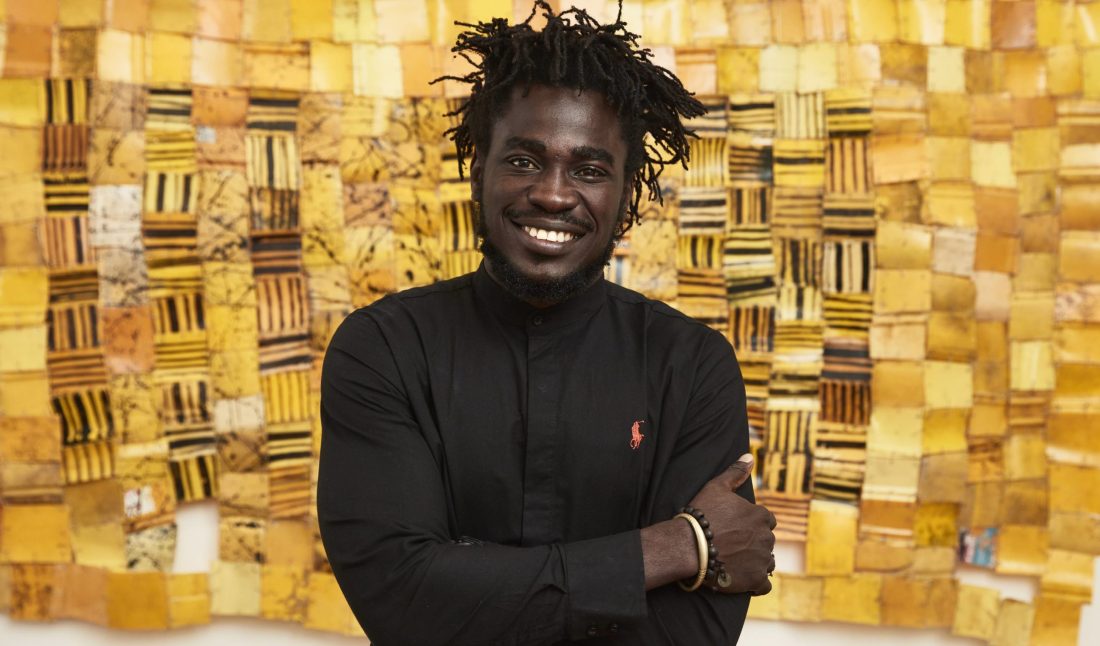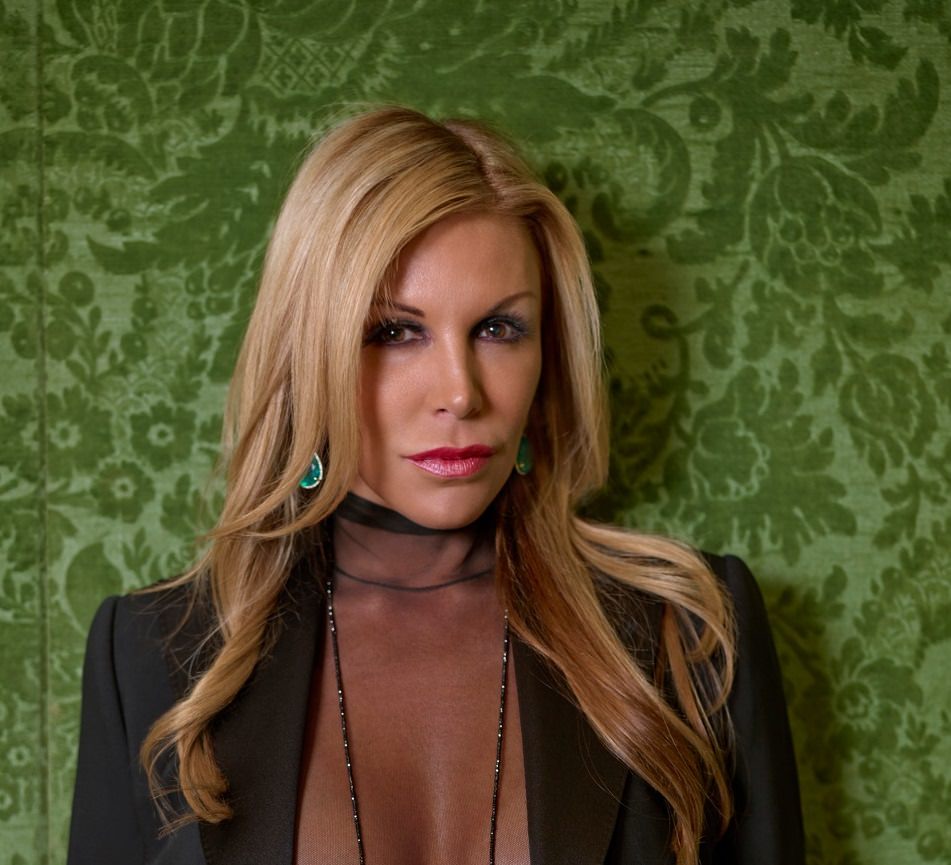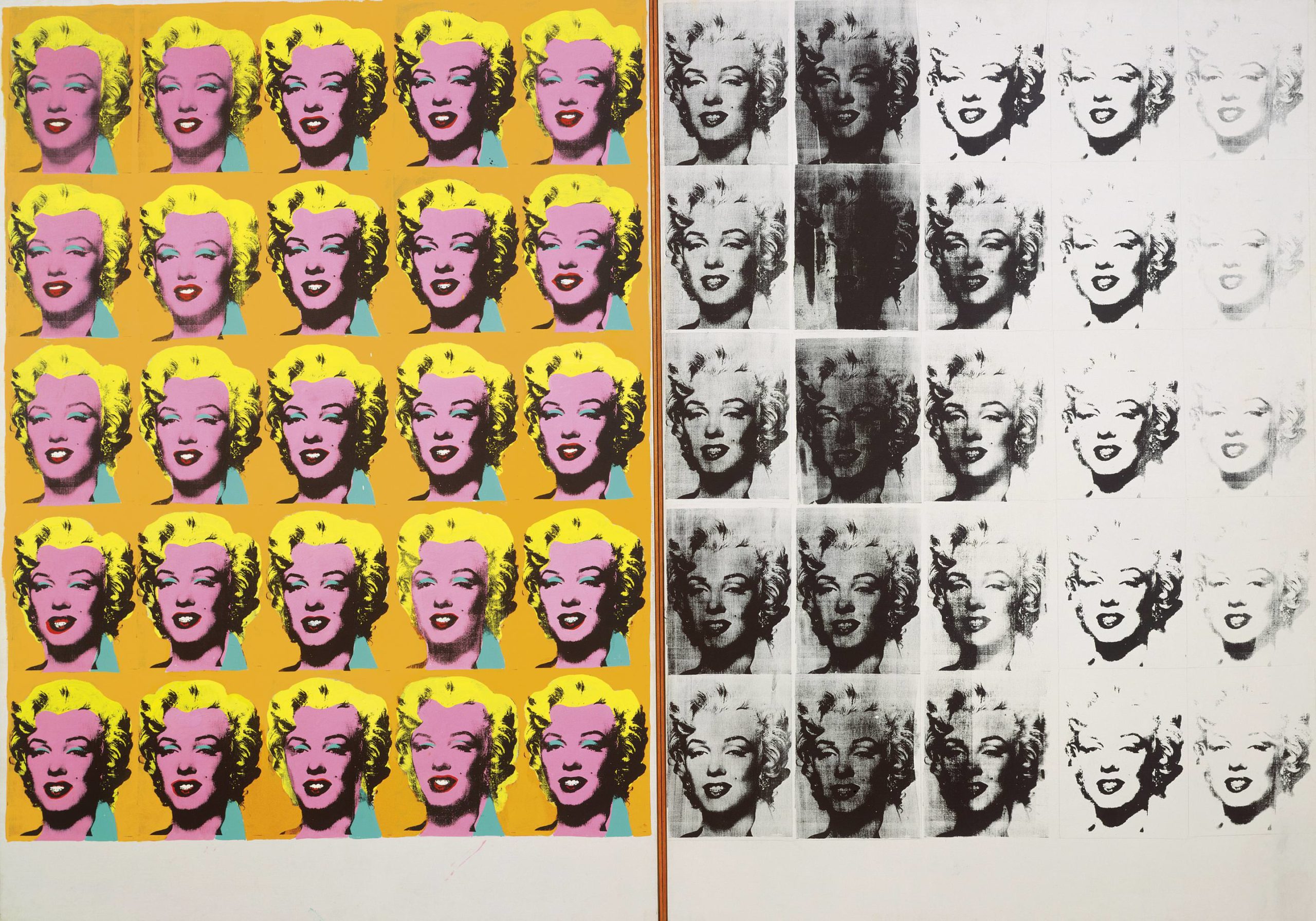Serge Attukwei Clottey may be best recognized for his woven, tapestry-like works made from plastic jerrycans. From his studio in the Labadi Beach area of Accra, he engages directly with his neighborhood and community via the GoLokal performance collective he founded, as well as the sculpture he creates addressing issues of sustainability, health, migration, and gender issues.
Last year, he debuted a major commission at Facebook’s headquarters in San Francisco, focused on the migration of objects through coastal cities. His work will be on view at a group show at the Vestfossen Kunstlaboratorium in Norway this spring and in the Karachi Biennale this fall.
Whitewall spoke with the artist about the role of performance in his practice and as a means for social change.
WHITEWALL: Can you tell us about the term you use for your work, “Afrogallonism”?
SERGE ATTUKWEI CLOTTEY: Afrogallonism is a concept I began exploring when I started using the gallon containers as a material over 17 years ago. The plastic containers themselves are a powerful symbol, as they touch on issues of the environment, consumerism, and Ghana’s relations with the Western world. My practice involves cutting, melting, and stitching the versatile plastic material—originally filled with oil and sold to Ghana from the West—into these pieces of art. It is interesting to me that these gallon containers then often migrate back to the West, but now as artworks.
WW: How did you first start working with the material of plastic jerrycans?
SAC: I was trying to deal with environmental issues, because I couldn’t express myself with painting. And plastic was the first thing I encountered. I grew up with these plastic jerrycans, which are used to transport and store fresh water. When I was a child, it was my responsibility to carry fresh water to the house. It represents a problem, carrying with it issues of water scarcity, environmental problems, and global warming. I used the water jerrycans by using them as a canvas instead of using a real canvas. So I started putting them together and painting portraits on them.
I realized there are more stories about the jerrycan. I researched where it came from and what it means to us and where it goes after it’s been used.
WW: This issue of plastic consumption, that’s also a global issue.
SAC: Exactly. So that was where the interest started developing, using my work to address issues of politics and environment, as well as religion, sexuality.
How the sexuality idea developed is that this particular object is very symbolic to women. Mostly, it is women who use it to store and fetch water. We decided to create a performance around this to create awareness of how women are attached to that object. In my studio, the assistants are all men. So any time we were going to collect water, we dressed as women.
Women would question us, and that started a conversation about getting the gallons out of the system. It’s not safe to store water in them. Our performance became educative for the community. It’s not hygienic to store water in them—the water becomes contaminated by the plastic eventually. So it has become a community-based project, where the awareness has been raised, and eventually we are getting rid of the plastic gallons in the community. Some women bring them to me to use in the studio.
WW: What was the moment for you when you realized that the work you were making could have this educative impact?
SAC: The first time was when I started cutting the gallons. I began to see what the inside looked like. The inside looked very rusty; you could tell that it’s not safe to store. People literally keep it under the sun for months because of the water scarcity.
So I would keep how they looked inside for the final work—I didn’t clean them. That was the moment when I realized this was a problem. That was when I realized that this could be a very strong statement to create awareness.
WW: What were the first reactions you saw from people who saw that?
SAC: I exhibited the pieces around my studio, which is my community. At first, they questioned why I cut them and what am I using them for. So those conversations happened. I could point to the work and say, “This is why it’s not hygienic to store water inside them.”
I make my work very accessible to the community, because I think the community is part of my process.
WW: Is that why performance is such a major part of your practice?
SAC: Performance is very big part of our culture. Our traditions are rooted in performance. I think more in performance terms because performance allows me to express myself very comfortably. Every tradition has a rite, and the rite is always a performance. The body is used to demonstrate, or it’s used for communicating.
Performance is how I approach my installations, my sculptures, my drawings. Performance is how I process all of my art forms.
It can also very risky, when I’m dealing with political issues, and using myself.
WW: Can you tell us about the collective you founded in 2012, GoLokal?
SAC: We were about five in 2012 and now we are about eighty. It’s a call to other people in the community. We can’t all draw, but performance will allow you to express yourself in a way that you can have an impact on people.
And as a collective, the kind of impact and information we can express is strong because we are a larger number. I’m interested in addressing critical issues, and believe that through art we can create movement. I have the platform, I am an artist, and collaboration is key to exploring those ideas.
WW: You’ve addressed issues of environment and sustainability, and you’ve addressed some women’s issues as well with your 2016 performance My Mother’s Wardrobe. What issues are you really interested in addressing in the next phase of your practice?
SAC: I’m trying to address issues of human rights. I think that it’s something that came about after my My Mother’s Wardrobe. I want to advocate on human rights by dealing especially with sexuality. It’s something that I need to address, starting with my community.
After the My Mother’s Wardrobe performance, there has been an engagement and understanding of the right of sexuality. I want to push that further by developing more projects. And I’m finding every possible means to still use the community, because once I use the community, it influences a wider audience.











